Today’s Current Affairs: 12th September 2025 for UPSC IAS exams, State PSC exams, SSC CGL, State SSC, RRB, Railways, Banking Exam & IBPS, etc
Table of Contents
US Hellfire missile:
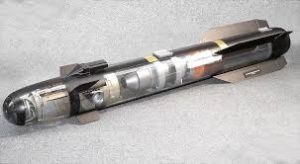
A video has left Washington in disbelief after it appeared to show a US Hellfire missile bouncing harmlessly off an unidentified flying object (UFO) off the coast of Yemen.
- It is an air-to-ground, laser-guided, subsonic tactical missile with significant anti-tank capacity.
- It can also be used as an air-to-air weapon against helicopters or slow-moving fixed-wing aircraft.
- It is used by the United States military as well as 30 US allies.
- The United States began developing the AGM-114 Hellfire in 1972 to address the Army’s requirement for a helicopter-launched antitank missile to counter Soviet armor formations.
- The Air-to-Ground (AGM)-114 provides precision striking power against tanks, structures, bunkers, and helicopters.
- The Hellfire missile is capable of defeating any known tank in the world today.
- It is the missile of choice for several kinds of unmanned aerial vehicles (UAVs), such as the MQ-1B Predator, MQ-9 Reaper, and MQ-1C Grey Eagle.
- AGM-114 missiles measure between 1.63-1.75 m in length, 0.178 m in diameter, and weigh 45-48.5 kg.
- They have a range of 7-11 km while carrying a payload of 8-11 kg.
- The missile flies at subsonic speeds to a maximum of Mach 1.3 (450 m/s).
- It is propelled by a single-stage solid-propellant solid-fuel rocket motor.
- The missile can be guided towards the objective either from inside the aircraft or by lasers outside the aircraft.
- The AGM-114R multipurpose missile is the latest in the Hellfire II missile range.
- Also known as the Hellfire Romeo, the missile integrates the capabilities of all previous Hellfire II variants.
- It can be launched from several different kinds of fixed-wing aircraft and helicopters, surface ships, and military ground vehicles.
- It uses a semi-active laser guidance system and an integrated blast fragmentation sleeve warhead to engage targets that previously needed several Hellfire variants to destroy.
Reunion Island : Indian Navy’s first training squadron Arrived

Ships of the Indian Navy’s first training squadron (1TS), INS Tir and ICGS Sarathi, arrived at Réunion Island, while INS Shardul reached Port Louis, Mauritius, recently, as part of their long-range training deployment in the southwest Indian Ocean Region.
- Reunion Island is a French island in the Western Indian Ocean.
- It lies about 680 km east of Madagascar and 180 km southwest of Mauritius.
- It covers an area of 2,511 sq. km.
- It is almost elliptical in shape, about 40 miles (65 km) long and 30 miles (50 km) wide.
- With Mauritius and Rodrigues Islands, they form the Mascarene Archipelago.
- Of volcanic origin, Réunion consists mostly of rugged mountains in an advanced state of dissection by short torrential rivers.
- It is home to the highest peak in the Indian Ocean, the Piton des Neiges, and one of the most active volcanoes on the planet, the Piton de la Fournaise.
- The capital is Saint-Denis, on the northern coast.
- Réunion’s coast has no good natural harbours.
- Réunion was first settled in the 17th century by colonists from France.
- Slave labourers were brought in from East Africa to work on plantations, and later Malays, Annamites, Chinese, and Malabar Indians were imported as indentured labourers.
Permafrost : New Discovery

In a discovery in Siberia, scientists recently uncovered a 44,000-year-old wolf, nearly perfectly preserved in permafrost.
- Permafrost is any ground that remains completely frozen—32°F (0°C) or colder—for at least two years straight.
- These permanently frozen grounds are most common in regions with high mountains and in Earth’s higher latitudes—near the North and South Poles.
- Permafrost can be found on land and below the ocean floor.
- Permafrost thickness can range from one meter (about three feet) to more than 1,000 meters (about 3,281 feet), covering entire regions, such as the Arctic tundra, or a single, isolated spot, such as a mountaintop of alpine permafrost.
- Permafrost covers large regions of the Earth. Almost a quarter of the land area in the Northern Hemisphere has permafrost underneath.
- While two years is the minimum for permafrost consideration, some regions have had frozen ground for hundreds of thousands of years.
- Scientists discovered the oldest known permafrost in Siberia, which has been frozen for the past 650,000 years.
- Permafrost is made of a combination of soil, rocks, and sand that are held together by ice.
- The soil and ice in permafrost stay frozen all year long.
- Although the ground is frozen, permafrost regions are not always covered in snow.
- Near the surface, permafrost soils also contain large quantities of organic carbon—a material leftover from dead plants that couldn’t decompose, or rot away, due to the cold.
- Lower permafrost layers contain soils made mostly of minerals.
- A layer of soil on top of permafrost does not stay frozen all year. This layer, called the active layer, thaws during the warm summer months and freezes again in the fall.
- In colder regions, the ground rarely thaws—even in the summer. There, the active layer is very thin—only 4 to 6 inches (10 to 15 centimeters). In warmer permafrost regions, the active layer can be several meters thick.
- A thawing permafrost layer can lead to severe impacts on people and the environment.
- For instance, as ice-filled permafrost thaws, it can turn into a muddy slurry that cannot support the weight of the soil and vegetation above it.
Infrastructure such as roads, buildings, and pipes could be damaged as permafrost thaws. - Additionally, organic matter (like the remains of plants) currently frozen in the permafrost will start to decompose when the ground thaws, resulting in the emission of methane and carbon dioxide into the atmosphere. This contributes to further global climate change.
Aspergillus section Nigri : New Discovery
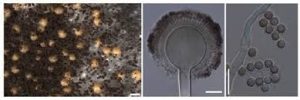
Agharkar Research Institute in Pune, an autonomous institute of the Department of Science & Technology, recently identified two novel species of Aspergillus section Nigri (commonly known as black aspergillus), Aspergillus dhakephalkarii and Aspergillus patriciawiltshireae.
- Aspergillus section Nigri comprises filamentous fungi.
- It is a taxonomic group within the genus Aspergillus, characterized by its black-pigmented conidia (spores) and diverse metabolic capabilities.
- Their colonies usually appear black due to pigmented conidia.
- This section includes species that are significant in food spoilage, industrial applications, and human health, particularly in relation to mycotoxin production and opportunistic infections.
- While primarily sourced from soil, certain members of this group have been observed in various environments such as decaying organic material and on the surfaces of plants, contributing to food spoilage and diseases in maize, onions, grapes, and peanuts.
- Strains of Aspergillus section Nigri can colonize maize and small grains (which include wheat, triticale, spelt, etc.) during pre-harvest, harvest, or post-harvest storage
- Their ability to colonize diverse substrates underscores the importance of understanding their taxonomy, ecology, and potential impacts on agricultural, and food safety.
- Some strains of Aspergillus niger are known to secrete ochratoxins –mycotoxins which can give rise to nephrotoxicity and renal tumours in a variety of animal species and are potentially hazardous to human health through their consumption.
- Niger is one of the most widely used fungi in biotechnology.
- Production of citric acid, gluconic acid, and various enzymes (amylases, proteases, and cellulases).
- Used in food processing, pharmaceuticals, and bioengineering.
Langkhun Festival:
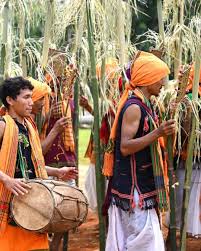
Tiwa tribesmen celebrated the Langkhun festival in Umsowai village in Karbi Anglong district of Assam.
- Langkhun Festival is a socio-religious event celebrated by the Tiwa community in Assam.
- During this festival the people pray for a good crop in the upcoming Rabi crop season.
- The members of the community make offerings and pray to the gods for a good harvest during this festival.
- Cultural events including music and dance are also part of the event.
- The Tiwa Langkhun festival has great cultural significance and the community prays for a good harvest
- The Tiwa people are also called Lalung and they live in Assam and Megalahaya states in northeastern India.
- There are Hill Tiwas and Plains Tiwas.
- They live in the Karbi Anglong District of Assam and in Megalahaya. They speak a Tibeto Burman language.
- The main festivals of Tiwa tribes are: Tiwa Bihu, Jon Beel Mela, Sagramisawa, Langkhunpuja etc.
Melioidosis: Case In Andhra Pradesh
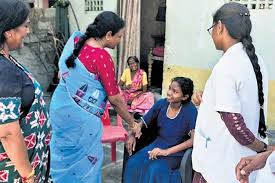
Health authorities have confirmed melioidosis in a patient from Turakapalem village in Andhra Pradesh.
- Melioidosis caused byan infectious disease caused by the environmental Gram-negative bacterium Burkholderia pseudomallei.
- It is seasonal, with 75–85% of cases occurring during the rainy season.
- It has a high case fatality rate (CFR) ranging from 16% to 50% in known endemic regions.
- It is an infectious disease endemic in Southeast Asia, northern Australia, much of the Indian subcontinent, southern China, Hong Kong, and Taiwan
- Transmission of Melioidosis:
- Touching contaminated soil with the hands or feet, especially if there are small cuts in the skin.
- Drinking contaminated water that has not been chlorinated
- Breathing in contaminated dust or water droplets
- Exposure to severe weather events such as tropical monsoon storms, cyclones, hurricanes and typhoons.
- It is common in people living with: Diabetes, Alcohol use disorder, Chronic kidney disease Chronic lung disease (like cystic fibrosis or COPD).
- Symptoms: Fever, headache, trouble breathing and Stomach or chest pain etc.
- Treatment: At present, there is no vaccine available for melioidosis.
Adi Sanskriti Platform:

The Ministry of Tribal Affairs unveiled the Beta Version of Adi Sanskriti at Bharat Mandapam, New Delhi, during the National Conference on Adi Karmayogi Abhiyan.
- Adi Sanskriti Platformis a pioneering digital learning platform for tribal artforms, preserving heritage, enabling livelihoods and connecting India’s tribal communities with the world.
- It is envisioned as the world’s first Digital University to preserve and promote the culture and traditional knowledge of tribal communities.
- It functions as an online marketplace for the world to access products made by tribal artisans.
- The platform integrates three major components:
- Adi Vishwavidyalaya (Digital Tribal Art Academy):Currently offering 45 immersive courses on tribal dance, painting, crafts, music, and folklore.
- Adi Sampada (Socio-Cultural Repository):A collection of over 5,000 curated documents across five themes, covering paintings, dance, clothing & textiles, artefacts and livelihood.
- Adi Haat (Online marketplace): It is currently linked with TRIFED, this will evolve into a dedicated online marketplace for tribal artisans, enabling sustainable livelihoods and direct consumer access.
- It is being built in close partnership with State Tribal Research Institutes (TRIs).
- States involved in its first phase: TRIs from Andhra Pradesh, Assam, Bihar, Chhattisgarh, Goa, Gujarat, Kerala, Madhya Pradesh, Maharashtra, Meghalaya, Odisha, Rajasthan, Tamil Nadu, Telangana, and Uttar Pradesh have contributed to the documentation, content curation, and digital mapping of tribal artforms.
Gyan Bharatam Mission: First Conference

The Ministry of Culture, at the first Gyan Bharatam International Conference on ‘Reclaiming India’s Knowledge Legacy through Manuscript Heritage’ under the Gyan Bharatam Mission, invited experts to present research on deciphering the Harappan (Indus Valley) script.
- The Gyan Bharatam Mission, announced in Union Budget 2025-26, is a national initiative to preserve, digitise, and disseminate India’s vast manuscript heritage, combining tradition with modern technology for future generations.
- Nodal Ministry: Ministry of Culture.
- Objective:
- Mission Components:
- Survey & Documentation: Nationwide identification and cataloguing of manuscripts.
- Conservation & Restoration: Safeguard fragile texts through scientific and traditional methods.
- Digitisation & Repository: AI-assisted digitisation and creation of a National Digital Repository.
- Technology & AI Innovation: Tools like Handwritten Text Recognition and Gyan-Setu AI Challenge.
- Mission Components:
- With over 44 lakh manuscripts documented in Kriti Sampada (National Database of Manuscripts), it preserves India’s civilisational knowledge spanning philosophy, science, medicine, mathematics, arts, literature, and spirituality.
- Supports Article 51A(f), fundamental duty to value and preserve cultural heritage.
- Aligns with National Education Policy (NEP) 2020, integrating Indian Knowledge Systems into modern education.
- It bridges heritage and technology, empowering youth while promoting India’s global cultural leadership.
SPREE 2025:
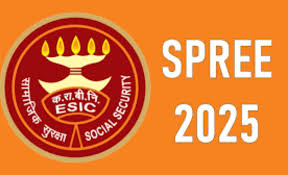
The Employees’ State Insurance Corporation (ESIC) has launched two major initiatives- SPREE-2025 and the AMNESTY Scheme, aimed at strengthening the social security framework and simplifying compliance for industries.
- The SPREE-2025 (Scheme for Promoting Registration of Employers and Employees) approved by the ESIC, aims to expand social security coverage under the ESI Act,1948.
- Active from 1st July to 31st December 2025, it offers a one-time opportunity for unregistered employers and employees, including temporary and contractual workers, to enroll without facing inspections or past dues.
- Employers can digitally register through the ESIC, Shram Suvidha, and MCA portals, with registration valid from the employer’s declared date.
- No contributions or benefits will apply for periods before registration, and no inspections or past record demands will be made for that period.
- It removes the fear of retrospective penalties and simplifies the process, encouraging voluntary compliance.
First Overseas Atal Innovation Centre:

Union Education Minister of India inaugurated India’s first overseas Atal Innovation Centre at IIT Delhi–Abu Dhabi campus during his UAE visit.
- First Overseas Atal Innovation Centre is a premier innovation hub established outside India under the Atal Innovation Mission (AIM).
- Launched in: September 2025, at IIT Delhi–Abu Dhabi campus.
- Objective is To promote innovation, research, and entrepreneurship among students and young professionals, To strengthen India–UAE collaboration in education, sustainability, and technology-driven solutions.
- Functions:
- Incubate start-ups and mentor innovators.
- Provide infrastructure and labs for cutting-edge research.
- Encourage joint student exchange, teacher training, and skill-building programs.
- Act as a bridge for global knowledge-sharing and innovation networks.
- Atal Innovation Mission (AIM) is a flagship initiative of the Government of India to create a culture of innovation and entrepreneurship.
- Organisation: Implemented by NITI Aayog.
ISRO Signed 100th Technology Transfer with HAL for SSLV Production:

ISRO signed its 100th technology transfer agreement with Hindustan Aeronautics Limited (HAL) to enable independent production of Small Satellite Launch Vehicles (SSLVs).
- Small Satellite Launch Vehicle (SSLV) is a 3-stage, cost-effective launch vehicle designed for deploying small satellites.
- Configured with three solid propulsion stages and a liquid-based Velocity Trimming Module (VTM) as the terminal stage.
- Developed by: Indian Space Research Organisation (ISRO).
- Specifications of SSLV:
- Size: About 2 meters wide and 34 meters tall – roughly the height of an 11-storey building.
- Weight: Around 120 tonnes at liftoff.
- Payload Capacity: Can carry up to 500 kg of satellites into a 500 km orbit – suitable for small satellites.
Geotagging of Buildings in Census:
The 2027 Census of India will introduce geotagging of all buildings for the first time during Houselisting Operations. Geotagging is the process of assigning latitude–longitude coordinates to each building and mapping it on a Geographic Information System (GIS). It provides a precise digital identity to every structure in India. Launched in To be carried out as part of Houselisting Operations (HLO), 2026, the first phase of Census 2027.
Decentralised Finance (DeFi):
The DeFi boom has raised national security concerns, with experts warning of its misuse for terror financing and money laundering. Decentralised Finance (DeFi) is a blockchain-based financial system that allows people to save, borrow, invest, and transact without traditional banks. Works through smart contracts, decentralised apps (DApps), and peer-to-peer networks.Rooted in the Bitcoin philosophy (2009) of decentralisation and transparency.
Expanded with Ethereum blockchain (2015) and the creation of DAOs (Decentralised Autonomous Organisations).
Huangyan Island (Scarborough Shoal):
China announced the creation of a national nature reserve on Huangyan Island (Scarborough Shoal) in the South China Sea. Huangyan Island (Scarborough Shoal). It is disputed coral atoll in the South China Sea, also called Scarborough Shoal (English), Huangyan Island (China), and Panatag Shoal (Philippines).Located about 220 km west of Luzon (Philippines) and near the Manila Trench. First appeared on the 1734 Velarde Map of the Philippines, claimed under Spanish rule and later the Treaty of Washington (1900). Named “Scarborough” after the British ship that grounded there in 1748. Subject of the 2012 Scarborough Shoal standoff between China and the Philippines. In 2016, the Permanent Court of Arbitration (PCA) under UNCLOS invalidated China’s “nine-dash line” claims but did not rule on sovereignty.




